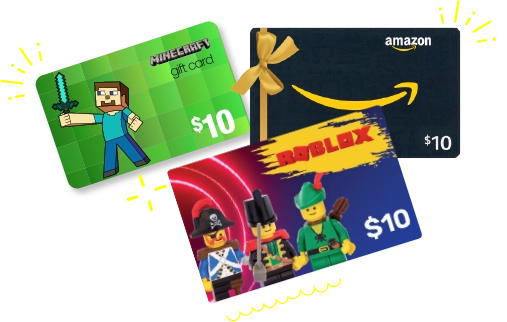

Prashant Pundir
Market segmentation
Market segmentation is the phenomenon of creating division among your target audience into smaller and approachable groups. It is based on various characteristics such as income, age, personality traits or behaviour, which later helps to segregate optimisation and advertisement to the diverse customers. Market segmentation helps in designing more effective marketing campaigns that aim at a particular target audience. The whole process of marketing is toned down into bits and pieces to help understand the needs of the customers and prioritise the time and efforts of the institutions.
There are 4 main types of market segmentation that carry sub-categories to further divide the audience and customers more coherently. Here, we are going to discuss and analyse how these segmentations make marketing more effective.
Demographic Segmentation
One of the most common and widely used segmentation in market research. This type of segmentation creates statistical data about a group of people and divides the audience by who they are, whether in a B2B or B2C context. It is extremely simple to use and helps in eliminating the irrelevant audience, allowing the research to focus only on the desired customers.
Demographic segmentation divides your audience with numerable demographic elements such as:
- Age
- Gender
- Nationality
- Annual income
- Education and ethnicity
- Family situation
- Location
- Company size
- Industry
- Job function
Demographic segmentation helps the organization target its customers more effectively.
Geographic Segmentation
Geographic Segmentation is a very basic level of segmentation, but works wonders. It identifies the audience through their geographical location. It creates small groups of customers based on geographic boundaries. Various factors determine the needs of the customers, and one of them is the geography. It is important for organizations to understand the interests of the customers based on their geographies and create marketing strategies accordingly.
Geographic segmentation divides its audience based on various geographical elements such as:
- Country
- City
- ZIP code
- Climate
- Urban or rural
- Radius around a certain location
- District/Borough
- Population density
- Economic status
This type of segmentation helps in understanding the geographical impact that influences customer’s purchase decisions.
Behavioural Segmentation
Behavioural segmentation targets the underlying behaviour and purchase habits of the audience and divides it into the smaller group of customers accordingly. Behavioural segmentation demands the organizations to study the actions of the customers, their past purchase habits, offline marketing behaviour, lifestyle and how they’ve interacted with the brand throughout. This type of segmentation consumes data based on the digital footprint of the customers, and aims to collect an overview of the whole customer experience and their buying journey.
Behavioural segmentation divides its audience based on various behavioural traits such as:
- Purchasing and spending habits
- Brand interactions
- User status
- Product knowledge
- Product ratings
- Business awareness
- Actions taken on websites
Understanding and delving deep into the buying behaviours of customers, organizations can target the customers’ needs better.
Psychographic Segmentation
A bit in alignment with the demographic segmentation, psychographic segmentation deals with human characteristics that are more mental and emotional. This type of segmentation is based on psychological attributes such as interests, beliefs, personality traits and more. It plays a crucial role in defining the market segment and allowing the organization to customize their products and marketing techniques accordingly.
Psychographic Segmentation divides its audience based on numerous psychological elements such as:
- Personality traits
- Values and opinions
- Attitudes and lifestyles
- Interests
- Motivations and priorities
- Conscious and subconscious beliefs
- Hobbies or social status
Markets divide their customers who are keen on living a particular lifestyle using this type of segmentation.
How to get started with Market Segmentation
- Conduct prefatory research: Before preparing anything else, start out by asking open-ended questions to the customers.
- Decide your market segmentation: Be clear about the type of market segmentation through which you want to divide your audience, i.e. demographics geographic, psychographics, or behaviour).
- Design a thought-out study: Ask questions based on all types of market segmentations. This will help in collecting a wide range of data to further target your audience effectively.
- Create your audience segments: Now create your customer segments by analysing their responses either manually or through digital statistical software.
- Test and observe: Implement and carry out the market segments and make sure they are useful and give the desired results. If not, try another set of segmentation based on other criterias.
Benefits of Market Segmentation
In a survey of marketing professionals in North America, 62 percent of respondents said improving audience segmentation to enable more precisely targeted messaging was a top priority. Let’s discuss the multitudes of benefits of market segmentation.
- Improved campaign performance: With the division of the market and the target audience, organizations can create marketing campaigns targeting specific customers and catering to their preferences and needs. They can tailor-make their brand image and messages for their different set of customers. The more specific the audience, the more beneficial the target is.
- Better allocation of resources: Organizations spend hundreds of dollars and so much man-effort to create perfect emails for their audience. Market segmentation allows them to create a specific marketing series tailor made for different sets of audiences, which they can automatically put forward whenever a customer of a certain segment arrives. This will lead to time-saving in terms of creating messages for number of customers and instead target smaller groups who are for sales.
- Informs Product Development: The market is extremely competitive, and organizations need to keep up with the ever-changing desires and needs of the customers and come up with distinctive marketing strategies. Market segmentation helps in identifying those needs and interests of customers and create products accordingly. They can set off products to different audiences and this also helps the customers to understand the organization better.
- Identifying new markets: Market segmentation with its different psychological and behavioural segments can also help discover new segments altogether by studying the underlying needs and interests of the customers. It has a huge potential to uncover and create new markets.
Areas to expand: It is almost impossible to cover the entire market arena, discover unexplored locations and reach there with your products and services. However, with market segmentation, organizations can actually reveal areas to expand. It helps in identifying the audience and locations that they’re not currently reaching. With persistent marketing efforts, they can also end up increasing the value and utilization of their products by discovering the audiences and locations that are in alignment with the offerings of those products.










